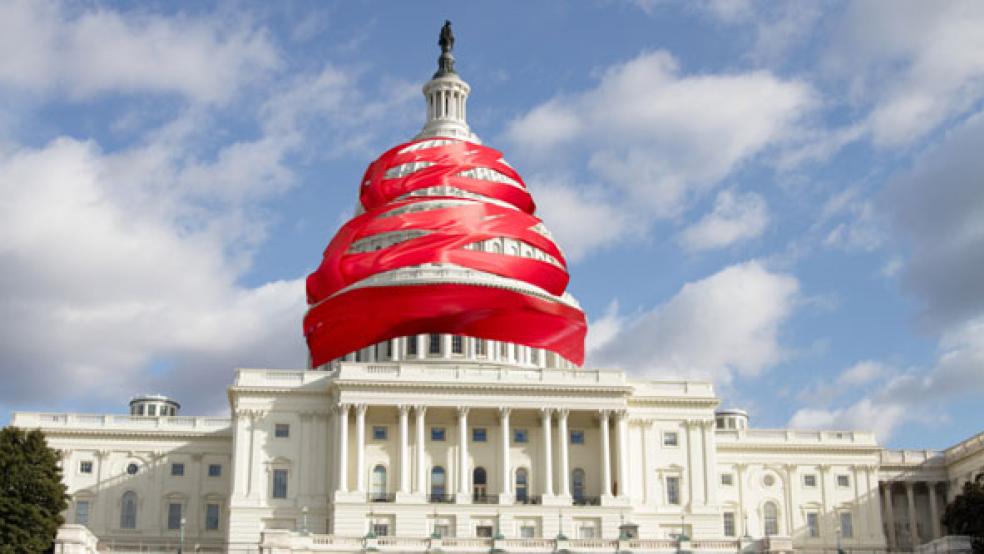The Budget and Economic Outlook report published late last month by the Congressional Budget Office (CBO) should set off alarm bells, as it predicts trillion-dollar annual deficits for the foreseeable future and a level of federal public debt set to hit 180 percent of GDP in 2050. The U.S. fiscal situation appears to be rapidly deteriorating, too. CBO estimates that the deficit for the coming decade will be $160 billion more than the agency had predicted just last August.
To rein in budget deficits, lawmakers traditionally argue for higher tax rates, broader tax bases and spending cuts. However, economists have long noted how broad-based tax increases and ad-hoc spending cuts can dampen economic growth. Even more problematic is that these policies are deeply unpopular, meaning both options appear off the table for the foreseeable future.
Fortunately, there remains another, often-overlooked option: Regulatory reform is a useful supplement to the more traditional ways of closing a budget gap.
Red tape impacts the government’s finances both directly and indirectly. Burdensome regulations require costly administrators to write and enforce. This drives up government spending. Compliance costs eat into the profits of businesses and by extension into the wages of the employees who work for them. That drives down tax collections.
Regulation also indirectly impacts productivity, by making it harder, more expensive and sometimes even impossible to produce the products that consumers want. This lowers economic growth and worsens the government’s fiscal position. A 2016 study for the Mercatus Center, the free-market research center where we work, estimated that federal regulations cost the economy $4 trillion in the year 2012 alone.
By unshackling the innovative potential of the U.S. economy, productivity-enhancing economic growth can reduce fiscal deficits through several channels. First, robust economic growth increases tax revenues by driving up the incomes of workers and pushing some taxpayers into higher tax brackets. Second, the use of programs such as unemployment insurance and food stamps decreases when the economy is expanding, so federal spending falls.
The difference between high productivity growth (roughly what the United States experienced from 1996-2004) versus low productivity growth (like the 1975-1990 economy) is not insignificant. If the United States achieves high productivity growth for the next decade, per-person national income will be more than $9,000 higher in 2029 compared to a low productivity economy. That equates to a $3.1 trillion difference in the national debt over the decade.
There are several regulatory reforms that could begin to improve the fiscal trajectory of the United States. First, the budgetary effects of regulation should be tracked and scored by an entity like the CBO, and any obvious red tape that has a significant impact on government spending should be scrapped unless there is a clear and compelling reason to keep it.
Second, applying regulatory caps and setting reduction targets for the overall level of regulation will reduce regulatory burdens. With this option, however, the magnitude of reductions will have to be substantial to have a discernable impact on the U.S. fiscal condition.
For example, Rhode Island recently trimmed its regulatory code by 31% after setting an expiration date for all of its regulations. The Canadian province of British Columbia cut its regulatory requirements roughly in half over the last two decades. It went from an economic laggard to one of Canada’s fastest growing provinces, all without sacrificing public health or the environment.
These are proven examples of jurisdictions that have successfully cut red tape, and Washington should follow their lead. To date, President Trump has made some modest regulatory reductions, but cuts will have to be far more aggressive to have a long-term impact on the budget.
Other governments are also making progress. Just last month, Governor Brad Little of Idaho set in motion a policy of “zero-based regulation.” Every few years, regulators will have to repeal all rule chapters under their purview. Any chapters they want to keep must be refiled as new regulations, justified with economic analysis. Governor DeSantis of Florida recently directed agency heads to build sunset provisions into new regulations, thereby facilitating the removal of regulatory clutter down the road.
The recent CBO report reminds us that the U.S. fiscal outlook continues its downward spiral. Lawmakers will inevitably return to the perpetual and important debate over raising taxes versus cutting spending. Why not make the job of balancing the budget a little easier by also looking at regulatory reforms that increase growth through channels other than fiscal policy?
James Broughel is a senior research fellow and Jack Salmon is a research assistant, both with the Mercatus Center at George Mason University. They are coauthors of new Mercatus Center research on “Cutting Red Tape to Cut the Deficit: An Innovative Approach to Balancing the Budget.”





